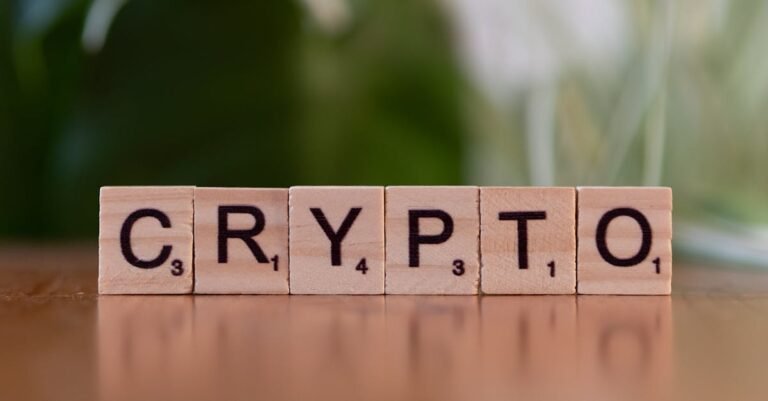Unlocking the Future: Discover the Best Altcoins Powering Web 3.0 Projects
Have you heard the buzz about Web 3.0? It feels like it’s everywhere these days! But what does it really mean? Think of it like the next evolution of the internet. If Web 1.0 was about reading static pages (like old school websites) and Web 2.0 is about reading, writing, and interacting on platforms owned by big companies (like Facebook, Google, Twitter), then Web 3.0 is about building a new internet that’s owned by the users. It’s built on cool technologies like blockchain, and it aims to be more decentralized, open, and fair. Instead of giant corporations controlling our data and the platforms we use, Web 3.0 envisions a world where we have more control, privacy, and ownership online.
But building a whole new internet isn’t easy! It requires brand new infrastructure, new ways to handle data, and new tools for developers. That’s where cryptocurrencies, specifically altcoins (which just means any crypto other than Bitcoin), come into play. These aren’t just digital money; many altcoins are like the fuel and building blocks for Web 3.0 projects. They power the networks, incentivize people to contribute resources (like storage or computing power), and enable new kinds of decentralized applications (dApps) that weren’t possible before. So, if you’re curious about where the internet is heading and which digital assets are making it happen, you’re in the right place. Let’s dive in and explore some of the best altcoins that are paving the way for the exciting world of Web 3.0!
Building the Foundation: Infrastructure Altcoins for a Decentralized Web
Imagine building a city. Before you can have houses, shops, or parks, you need roads, plumbing, and electricity – the basic infrastructure. Web 3.0 is similar. Before we can have amazing decentralized social media or user owned streaming services, we need the foundational layers that allow everything to connect and run smoothly. This is where infrastructure altcoins shine. They provide the essential frameworks and tools needed to build and operate the decentralized web. They tackle big challenges like making different blockchains talk to each other or getting real world information onto the blockchain reliably.
Think about the internet today. It feels seamless, right? You click a link, and you go from one website to another. But behind the scenes, different systems are working together. For Web 3.0 to feel just as smooth, we need blockchains – which are like separate digital nations – to be able to communicate and share information. We also need a way for smart contracts (self executing agreements written in code) to interact with the real world. How can a blockchain based insurance policy know if a flight was actually delayed? It needs trusted data from the outside. Let’s look at two key projects solving these fundamental infrastructure problems.
Polkadot (DOT): The Internet of Blockchains
One of the biggest hurdles for Web 3.0 is that many blockchains exist in isolation. Think of Bitcoin, Ethereum, Solana – they often operate independently, like islands. This makes it hard to build applications that leverage the strengths of multiple blockchains. Polkadot aims to solve this problem by being a ‘blockchain of blockchains’. Its goal is to connect different, specialized blockchains into a single, unified network.
How does it do this? Polkadot has a core chain called the Relay Chain. This acts like the central hub responsible for security and coordination across the network. Then, other independent blockchains, called parachains, can connect to this Relay Chain. These parachains can be highly specialized for specific tasks – one might be optimized for gaming, another for decentralized finance (DeFi), and another for digital identity. By connecting to the Relay Chain, they benefit from its shared security and, crucially, they can communicate with each other. This is called interoperability.
- Why is interoperability so important? Imagine if your email app could only send messages to people using the exact same app. It wouldn’t be very useful! Interoperability in Web 3.0 means assets, data, and services can flow freely between different blockchains. This unlocks huge potential for innovation, allowing developers to combine features from various chains to create more powerful and user friendly dApps. For example, a game built on a dedicated gaming parachain could use assets from a DeFi parachain or verify identity using a specialized identity parachain.
- How does Polkadot work technically (in simple terms)? The Relay Chain doesn’t handle complex tasks itself; it mostly validates the work done by the parachains. Parachains ‘rent’ a slot on the Relay Chain (often through auctions where projects use DOT tokens) to connect. This shared security model means individual parachains don’t have to bootstrap their own security from scratch, which is a massive undertaking. They inherit the robust security of the entire Polkadot network.
- What about the DOT token? The native token, DOT, plays several key roles:
- Staking: Holders can stake their DOT to help secure the network and validate transactions, earning rewards in return. This is part of Polkadot’s Proof of Stake consensus mechanism.
- Governance: DOT holders have a say in the future direction of the Polkadot network, voting on proposals for upgrades or changes.
- Bonding: Projects need to lock up (bond) DOT tokens to secure a parachain slot, either by winning an auction or through other means. This creates demand for the token.
Polkadot’s vision is ambitious: to create a scalable, secure, and interoperable foundation for Web 3.0. It allows for specialization (different chains for different jobs) while ensuring they can all work together. However, it faces challenges too. The parachain auction process can be complex and expensive for new projects, and adoption depends on developers actively building on its ecosystem. Competition from other interoperability solutions like Cosmos (ATOM) also exists. Despite these hurdles, Polkadot remains a central pillar in the effort to build a truly interconnected decentralized web, making DOT a significant altcoin for Web 3.0 infrastructure.
Chainlink (LINK): Bridging Blockchains and the Real World
Blockchains are incredibly secure and transparent, but they have a limitation: they are essentially closed systems. They can easily verify information within their own network, but they can’t directly access data from the outside world (like stock prices, weather information, sports results, or data from IoT sensors) without compromising their security and decentralization. This is known as the “oracle problem.” If a smart contract needs real world data to execute – say, an insurance contract paying out based on rainfall data – how does it get that data reliably and trustworthily?
This is where Chainlink comes in. Chainlink is a decentralized oracle network (DON). It doesn’t rely on a single source for external data, which could be a point of failure or manipulation. Instead, it uses a network of independent node operators to fetch, validate, and deliver data from off chain sources to on chain smart contracts. Think of it like having multiple independent witnesses verifying a piece of information before it’s accepted as fact by the blockchain.
- How does Chainlink ensure data accuracy?
- Decentralization: Multiple independent nodes retrieve the same data from various sources.
- Data Aggregation: The nodes’ responses are aggregated, filtering out outliers or potentially false information. A consensus is reached on the correct data point.
- Reputation and Staking: Node operators are required to stake LINK tokens as collateral. If they provide bad data or fail to perform their duties reliably, their staked LINK can be slashed (taken away). This incentivizes honest and reliable behavior. Good performance earns them rewards in LINK.
- Why is this crucial for Web 3.0? So many potential Web 3.0 applications rely on external data. Consider:
- DeFi: Price feeds for lending protocols, derivatives, and stablecoins.
- Insurance: Verifying real world events like flight delays, crop damage from weather data, or accidents from IoT sensors.
- Gaming & NFTs: Using Chainlink’s Verifiable Random Function (VRF) for provably fair randomness in games or NFT minting. Connecting NFTs to real world events or data.
- Supply Chain: Tracking goods using IoT data fed onto the blockchain via Chainlink.
Without reliable oracles like Chainlink, smart contracts would be severely limited in their real world applicability, hindering the growth of Web 3.0.
- Chainlink’s Expanding Services: Chainlink isn’t just about simple data feeds anymore. They’ve expanded their offerings to include:
- Chainlink VRF: Provides tamper proof randomness.
- Chainlink Keepers: Automates smart contract functions based on predefined conditions (e.g., execute a trade when a price hits a certain level).
- Cross Chain Interoperability Protocol (CCIP): Aims to provide a standard for sending messages and tokens between different blockchains, complementing projects like Polkadot.
The LINK token is essential for the network’s operation. Clients pay fees in LINK to request data, and node operators earn LINK for providing reliable services and stake it as collateral. Chainlink has established itself as the dominant oracle solution in the blockchain space, integrating with numerous blockchains and supporting a vast ecosystem of dApps. Its importance cannot be overstated; it acts as a vital bridge enabling blockchains to interact meaningfully with the world around us. While competition exists and the complexity of securing cross chain communication is high, Chainlink’s network effect and continuous innovation make LINK a cornerstone altcoin for the functioning of Web 3.0.
Why Infrastructure Matters Deeply: Building Web 3.0 without robust infrastructure like Polkadot and Chainlink would be like trying to run a modern city on dirt paths with no reliable communication. Polkadot’s focus on interoperability prevents the decentralized web from becoming a collection of isolated digital islands, fostering collaboration and shared innovation. Chainlink ensures that the decentralized applications built on these blockchains can actually interact with and respond to the real world, making them practical and powerful. These aren’t just abstract technical concepts; they are the essential foundations for creating user experiences in Web 3.0 that are seamless, interconnected, and truly useful.
Data, Storage, and Access: Altcoins Handling Web 3.0’s Information Layer
Think about how much data runs the current internet (Web 2.0). Everything from your social media posts and photos to website content and application data is stored somewhere, usually on massive servers owned by companies like Amazon (AWS), Google, or Microsoft. While convenient, this centralized model has drawbacks: censorship (your content can be taken down), lack of true ownership (you don’t control the servers holding your data), and potential single points of failure. Web 3.0 aims to change this by decentralizing data storage and access.
Instead of relying on a few large companies, Web 3.0 envisions a world where data is stored across a distributed network of computers run by individuals and organizations globally. This approach promises greater censorship resistance, enhanced user control, and potentially lower costs. But how do you manage potentially vast amounts of data in a decentralized way? How do you ensure it’s stored reliably and permanently if needed? And how do you easily find and retrieve specific information scattered across a blockchain? Several altcoin projects are tackling these critical data layer challenges.
Filecoin (FIL): A Decentralized Marketplace for Storage
Filecoin aims to create a decentralized storage network that competes directly with cloud storage giants. It essentially creates an open marketplace where anyone with spare hard drive space (storage providers or ‘miners’) can rent it out to users who need to store data. Users pay storage providers in Filecoin’s native token, FIL, to store their files securely and reliably over time.
How does Filecoin ensure your data is actually being stored correctly and isn’t lost? It uses clever cryptographic proofs:
- Proof of Replication (PoRep): When a provider accepts data, they must prove they have created a unique copy of that data dedicated specifically to that user. This prevents them from pretending to store data for multiple users using the same physical storage space.
- Proof of Spacetime (PoSt): Storage providers must continuously prove, over time, that they are still storing the data they committed to. They are randomly challenged to provide parts of the data, proving its ongoing availability. Failure to do so can result in penalties, losing some of their staked FIL.
These proofs create trust in a trustless environment. You don’t need to know or trust the storage provider; the network’s protocol verifies they are doing their job. Key benefits of this model include:
- Censorship Resistance: Data is stored across many providers globally, making it much harder for any single entity to censor or delete it.
- Data Sovereignty: Users have more control over their data, choosing providers based on factors like cost, location, or reputation.
- Potential Cost Savings: By creating an open market, Filecoin aims to drive down storage costs compared to centralized providers.
- Integration with IPFS: Filecoin works closely with the InterPlanetary File System (IPFS), a peer to peer protocol for content addressing and delivery. IPFS handles how data is found and moved, while Filecoin provides the incentive layer to ensure data is persistently stored.
Use cases for Filecoin are diverse: storing large datasets for scientific research, archiving valuable corporate or historical data, hosting decentralized websites and applications, and providing persistent storage for Non Fungible Tokens (NFTs), ensuring the associated media file doesn’t disappear. The FIL token is central: users pay storage fees in FIL, and providers earn FIL as block rewards and storage fees, while also staking FIL as collateral. However, Filecoin faces challenges like the complexity of its system, potentially slower retrieval times compared to centralized services initially, and the need for wider adoption by both users and storage providers. Despite this, Filecoin represents a fundamental shift in how we think about data storage, making FIL a crucial altcoin for the Web 3.0 data layer.
Arweave (AR): Permanent, Pay Once Storage
While Filecoin offers ongoing storage contracts, Arweave takes a different approach: permanent data storage. The idea behind Arweave is “store data once, pay once, and it’s stored forever.” This is a bold claim, designed for data that needs to be preserved indefinitely, like historical records, scientific papers, important legal documents, or the very fabric of the internet itself.
How does Arweave achieve this seemingly impossible feat? It uses a unique blockchain like structure called the Blockweave and an economic model based on a storage endowment.
- Blockweave Structure: Unlike typical blockchains where miners only need the latest block, Arweave miners must also store a ‘recall block’ – a randomly chosen previous block from the chain’s history. This incentivizes miners to store more of the network’s data, not just recent transactions. As more data is added, the incentive to store historical data increases.
- Storage Endowment: When a user pays (in AR tokens) to store data, a portion of that fee goes to the miners processing the transaction, but the majority is placed into a storage endowment. This endowment is designed to generate interest or yield over time (through conservative estimates of declining storage costs), theoretically generating enough funds to pay for the cost of storing that data indefinitely, even centuries into the future.
Arweave aims to create the “permaweb” – a version of the web where websites, applications, and data are stored permanently and cannot be taken down or altered. Key aspects include:
- Immutability: Once data is on the Arweave network, it cannot be changed or deleted, making it ideal for permanent records.
- Censorship Resistance: Like Filecoin, data is distributed globally, resisting censorship.
- Use Cases: Archiving news articles, academic research, cultural heritage, legal agreements, code repositories, and hosting truly permanent websites or front ends for dApps. Many NFT projects also use Arweave to ensure the underlying artwork or metadata is stored permanently.
The AR token is used to pay for storage uploads and to reward miners who store data and validate transactions. The long term sustainability of the endowment model is a key question – it relies on storage costs decreasing over time faster than the endowment depletes. Scalability as the amount of stored data grows is another challenge. However, for applications requiring absolute permanence, Arweave offers a unique and powerful solution, positioning AR as a vital altcoin for specific, critical data preservation needs within Web 3.0.
The Graph (GRT): Indexing the Decentralized Web
Storing data decentrally is one thing, but finding and using it efficiently is another. Blockchains contain vast amounts of valuable information, but querying this data directly can be incredibly slow and cumbersome. Imagine trying to find all transactions involving a specific address on Ethereum by manually scanning every single block – it’s impractical for real time applications. This is the problem The Graph solves.
The Graph acts like a decentralized indexing protocol, often described as the “Google for blockchains.” It organizes blockchain data and makes it easily searchable and accessible for decentralized applications (dApps). It allows developers to define how blockchain data should be structured and indexed using open APIs called subgraphs.
Think of a subgraph like a specific index for a library. Instead of searching the entire library (the blockchain), a dApp can query a relevant subgraph to quickly find the exact information it needs – for example, the price history of a token on a decentralized exchange, the ownership records of NFTs in a collection, or the voting history within a Decentralized Autonomous Organization (DAO).
The Graph network has several key participants who use the GRT token:
- Indexers: Node operators who stake GRT and run the software to index data and process queries from dApps. They earn query fees and indexing rewards.
- Curators: Subgraph developers, data consumers, or community members who signal (using GRT) which subgraphs are high quality and should be indexed by the network. They earn a portion of the query fees for the subgraphs they signal on.
- Delegators: Individuals who want to contribute to network security without running a node themselves. They delegate their GRT stake to existing Indexers and earn a portion of the rewards and fees collected by that Indexer.
- Consumers: The dApps and users who pay query fees (in GRT) to retrieve data from the subgraphs.
Why is this essential for Web 3.0? A smooth user experience often depends on quick access to information. DeFi dashboards need real time price charts, NFT marketplaces need to display items quickly, and DAO governance platforms need to show proposal history efficiently. Without an indexing layer like The Graph, many dApps would feel slow and clunky, hindering adoption.
- Benefits: Faster dApp performance, easier development (developers don’t need to build their own indexing infrastructure), and decentralized access to blockchain data.
- Transition: The Graph started with a hosted service but is progressively moving towards a fully decentralized network where anyone can run the necessary roles.
Challenges include competition from other indexing solutions and the complexity of reliably indexing data across an increasing number of diverse blockchains. However, The Graph has established a strong lead and a vibrant ecosystem. By making blockchain data readily usable, GRT is a critical altcoin enabling the development of sophisticated and user friendly Web 3.0 applications.
The Data Difference in Web 3.0: Projects like Filecoin, Arweave, and The Graph represent a fundamental rethinking of how data is handled online. Filecoin decentralizes storage for everyday needs, Arweave ensures critical data survives permanently, and The Graph makes all this on chain information easily accessible. Together, they form a crucial layer of the Web 3.0 stack, moving us away from corporate data silos towards a future where data is more resilient, user controlled, and readily available for innovation.
Powering the Experience: Specialized Altcoins for Web 3.0 Applications
Beyond the core infrastructure and data layers, Web 3.0 is also about enabling entirely new kinds of applications and services built on decentralized principles. This requires specialized protocols tackling specific challenges, from providing wireless connectivity to offering computing resources in a decentralized way. These projects often focus on disrupting existing industries or creating entirely new markets by leveraging blockchain technology and token incentives. They demonstrate the breadth of innovation happening within the Web 3.0 space, pushing the boundaries of what’s possible when you combine peer to peer networks with crypto economics.
Think about services you use today: your mobile phone plan, cloud computing services like AWS or Google Cloud. These are typically provided by large, centralized companies. Web 3.0 projects are exploring ways to build community owned and operated alternatives. This often involves incentivizing individuals to contribute resources – like bandwidth, storage, or processing power – to build a collective network. Let’s explore a couple of exciting examples of altcoins powering these specialized Web 3.0 experiences.
Helium (HNT): Building People Powered Wireless Networks
Helium is one of the most ambitious and unique projects in the Web 3.0 space. Its goal is to build decentralized wireless networks, starting with a global network designed for Internet of Things (IoT) devices. Think about smart pet collars, environmental sensors, smart city infrastructure, or asset trackers – these devices often need low power, long range connectivity, which is different from the high bandwidth needs of your smartphone.
Instead of building expensive cell towers like traditional telecom companies, Helium incentivizes ordinary people and businesses to deploy small hardware devices called Hotspots. These Hotspots provide wireless network coverage (using a technology called LoRaWAN) over a radius of several miles. In return for providing this coverage and transferring data from nearby IoT devices, Hotspot owners earn Helium’s native token, HNT.
How does Helium ensure that Hotspots are actually providing useful coverage where they claim to be? It uses a unique consensus mechanism called Proof of Coverage (PoC):
- Hotspots periodically issue challenges over the internet to other nearby Hotspots.
- The challenged Hotspots must prove they received the challenge via radio waves (proving they are physically where they claim and providing coverage).
- Witness Hotspots also listen for these challenge transmissions and report what they hear.
- Based on these interactions, the network validates legitimate coverage and rewards participants with HNT tokens.
This clever system bootstrapped a massive, global IoT network relatively quickly and cost effectively. Key aspects of Helium include:
- Decentralized Wireless (DeWi): Creating wireless infrastructure owned and operated by its users, not a single corporation.
- Incentive Model: HNT tokens reward Hotspot deployment and network usage, driving network growth.
- Low Cost IoT Connectivity: Aims to provide significantly cheaper connectivity for IoT devices compared to traditional cellular plans.
- Expansion to 5G: Helium is applying the same model to build a decentralized 5G network (Helium Mobile), incentivizing people to deploy small cell 5G radios to augment cellular coverage.
- Tokenomics: HNT is mined by Hotspots for providing coverage and transferring data. To actually use the network (e.g., for an IoT sensor to send data), users burn a separate token called Data Credits (DC). DCs have a fixed price in USD and are created by burning HNT, creating a deflationary pressure on HNT as network usage increases.
Use cases range from smart agriculture and logistics tracking to environmental monitoring and smart city applications. Helium’s potential lies in disrupting the traditional, capital intensive telecom industry by leveraging community participation. However, it faces challenges: ensuring sufficient network density and reliability in all areas, competition from established players, navigating complex global regulations for wireless spectrum, and managing the economics of the HNT and DC tokens. Despite these hurdles, Helium’s innovative approach to building physical infrastructure through crypto incentives makes HNT a fascinating altcoin powering a unique Web 3.0 application.
Akash Network (AKT): The Decentralized Cloud Computing Marketplace
Just as Filecoin targets decentralized storage, Akash Network aims to decentralize cloud computing. Today, most websites, applications, and backend services run on servers hosted by major cloud providers like Amazon Web Services (AWS), Google Cloud Platform (GCP), and Microsoft Azure. Akash Network envisions an open marketplace where individuals and data centers with unused computing capacity can offer it to developers who need it, potentially at much lower prices.
Think of it like an “Airbnb for cloud compute.” Providers list their available server resources (CPU, memory, storage) on the Akash marketplace. Developers define the resources they need in a deployment file and submit it to the network. An auction system then matches the developer’s request with the best offer from a provider. The entire process is managed via the Akash blockchain.
Why would someone choose decentralized compute over established players?
- Potential Cost Savings: By tapping into underutilized resources globally, Akash aims to offer compute power significantly cheaper (sometimes up to 80-90% cheaper) than traditional cloud providers.
- Censorship Resistance & Flexibility: Applications deployed on Akash are less susceptible to being deplatformed by a single centralized provider. Developers gain more flexibility and control over their infrastructure.
- Permissionless: Anyone can offer compute resources, and anyone can deploy applications without needing approval from a central authority.
- Interoperability (Cosmos): Built using the Cosmos SDK, Akash benefits from the interoperability features of the Cosmos ecosystem, allowing potential interaction with other Cosmos based blockchains.
The native token, AKT, serves several purposes:
- Security: Validators stake AKT to secure the network using a Proof of Stake consensus mechanism.
- Governance: AKT holders can vote on network upgrades and parameter changes.
- Settlement Currency: AKT acts as the primary means for settling payments between developers (tenants) and compute providers. Developers lock AKT to fund their deployments.
Use cases for Akash include hosting web applications, running blockchain nodes, backend processing for dApps, and potentially even demanding workloads like AI/ML training (though this is still developing). The main challenge for Akash is adoption. Developers need to trust the reliability and performance of decentralized providers, and the platform needs to attract enough high quality providers to meet demand. Competition from established cloud giants, who offer a vast suite of integrated services, is also immense. However, Akash Network presents a compelling vision for a more open, competitive, and resilient cloud computing landscape, making AKT a noteworthy altcoin in the Web 3.0 application space.
Powering Real World Decentralization: Helium and Akash demonstrate how Web 3.0 principles can extend beyond purely digital realms. Helium uses crypto incentives to build tangible, physical wireless infrastructure. Akash aims to reshape the market for the fundamental computing resources that power the internet itself. These projects highlight the creativity within the Web 3.0 ecosystem, seeking to build user owned alternatives to critical services we rely on every day. They show that the decentralized future isn’t just about finance or data; it’s about fundamentally changing how various internet services and even physical infrastructure can be built and managed.
Wrapping Up: The Building Blocks of a New Internet
So, what have we seen? Web 3.0 isn’t just a vague concept; it’s actively being built, piece by piece, by innovative projects powered by altcoins. These aren’t just speculative assets; they are functional tokens that underpin the very infrastructure and services of the next generation internet.
We explored foundational players like:
- Polkadot (DOT): Creating the “internet of blockchains” by enabling different networks to communicate and share security.
- Chainlink (LINK): Securely bridging the gap between blockchains and real world data through its decentralized oracle network.
We looked at crucial projects managing the data layer:
- Filecoin (FIL): Building a decentralized marketplace for data storage, challenging cloud giants.
- Arweave (AR): Offering a unique solution for permanent, pay once data storage – the “permaweb.”
- The Graph (GRT): Indexing blockchain data to make it easily accessible for fast and efficient dApps.
And we touched upon specialized altcoins enabling unique Web 3.0 experiences:
- Helium (HNT): Incentivizing people to build decentralized wireless networks for IoT and beyond.
- Akash Network (AKT): Creating an open marketplace for cloud computing resources.
Each of these projects, and many others out there, are tackling complex problems to make the vision of a more decentralized, user owned, and open internet a reality. They represent different facets of the Web 3.0 stack – from the base layer infrastructure to data management and specific applications.
It’s important to remember that this space is still young and rapidly evolving. Investing in cryptocurrencies carries risks, and technology is constantly changing. What looks like a leading project today might face new competition tomorrow. Always do your own thorough research (DYOR!) before making any decisions.
But the potential is undeniable. These altcoins are more than just code and tokens; they represent a fundamental shift towards a more open, transparent, and user empowered digital world. The future of the internet is being coded right now, powered by these innovative projects.
Ready to learn more? Start exploring the ecosystems around these projects. Read their whitepapers, join their community discussions online, and see what developers are building on their platforms. The journey into Web 3.0 is just beginning – dive in and discover the future being built today!









